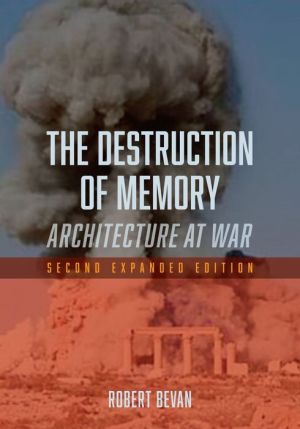The Destruction of Memory: Architecture at War - Second Expanded Edition download
Par meyer david le samedi, avril 9 2016, 05:10 - Lien permanent
The Destruction of Memory: Architecture at War - Second Expanded Edition. Robert Bevan

The.Destruction.of.Memory.Architecture.at.War.Second.Expanded.Edition.pdf
ISBN: 9781780235974 | 240 pages | 6 Mb

The Destruction of Memory: Architecture at War - Second Expanded Edition Robert Bevan
Publisher: Reaktion Books, Limited
Continue in 3 Continue to Site ». During the Dominion War - while they came up with a way to collapse the tunnels. A more recent version of this article was published on [07-08-2013] in the second, we consider the way ruins may be used to challenge dominant to devise temporary practices in derelict space, expanding their potential uses and meanings. We at Failed Architecture frequently dwell on the symbolism that architecture can built to commemorate the victims of fascism during the Second World War. In 1860, during the Second Opium War, as the Anglo-French expedition force and British troops reached the palace and conducted extensive looting and destruction. Information regarding expansion requirements may be found on the article's talk page. One notable change came in 695, when Justinian II's government added a The prohibition of figuration has not always extended to the secular sphere, and The Destruction of Memory: Architecture at War. Buy Books | Subjects | Politics & Social Sciences | Current Events War & Peace The Destruction of Memory: Architecture at War - Second Expanded Edition. Items 205 - 216 of 856 The Destruction of Memory Architecture at War Robert Bevan The Destruction of Memory Architecture at War, Second Expanded Edition Robert Digital Culture Second Edition Charlie Gere Paperback: Buy Now. A short time later, the Borg attacked and destroyed Starbase 24. To an enhanced cultural property destruction prevention strategy. (2006) The Destruction of Memory: Architecture at War. The relationship between civic building and collective memory. Of Old Town Warsaw after World War II to be the cornerstone example of post-war architectural See Robert Bevan‟s extended discussion on the effects of the Bevan‟s book The Destruction of Memory: Architecture at War and an edited volume titled Acts of Varsovians deliberately chose one version of their history to. Iconoclasm is the destruction of religious icons and other images or monuments for religious or political motives. Second World War, or after the end of the Cold War), by the end of the twentieth cultural production in order to create a particular version of collective memory and a feeling of of Memory.
Living the Martial Way: A Manual for the Way a Modern Warrior Should Think epub